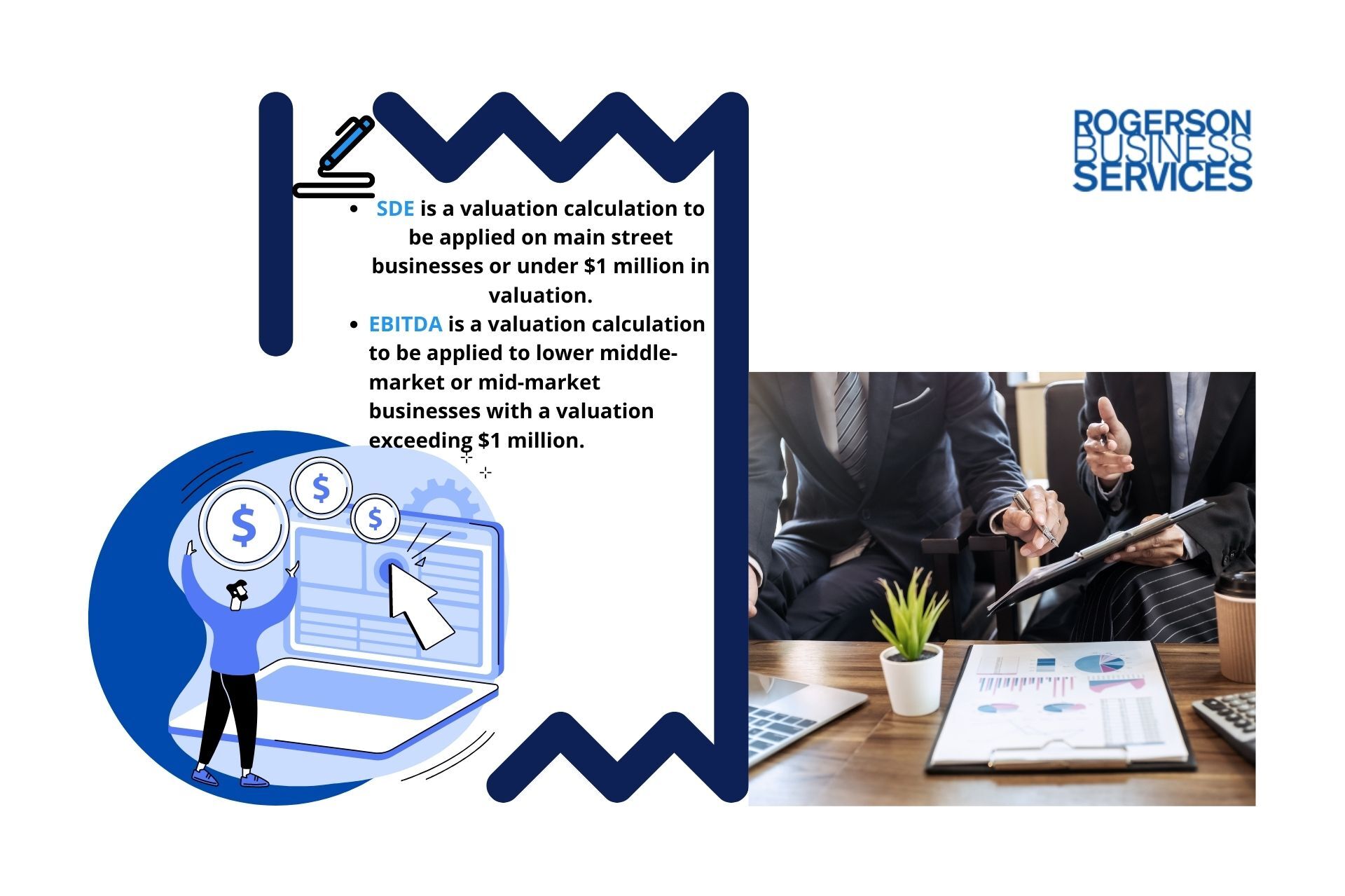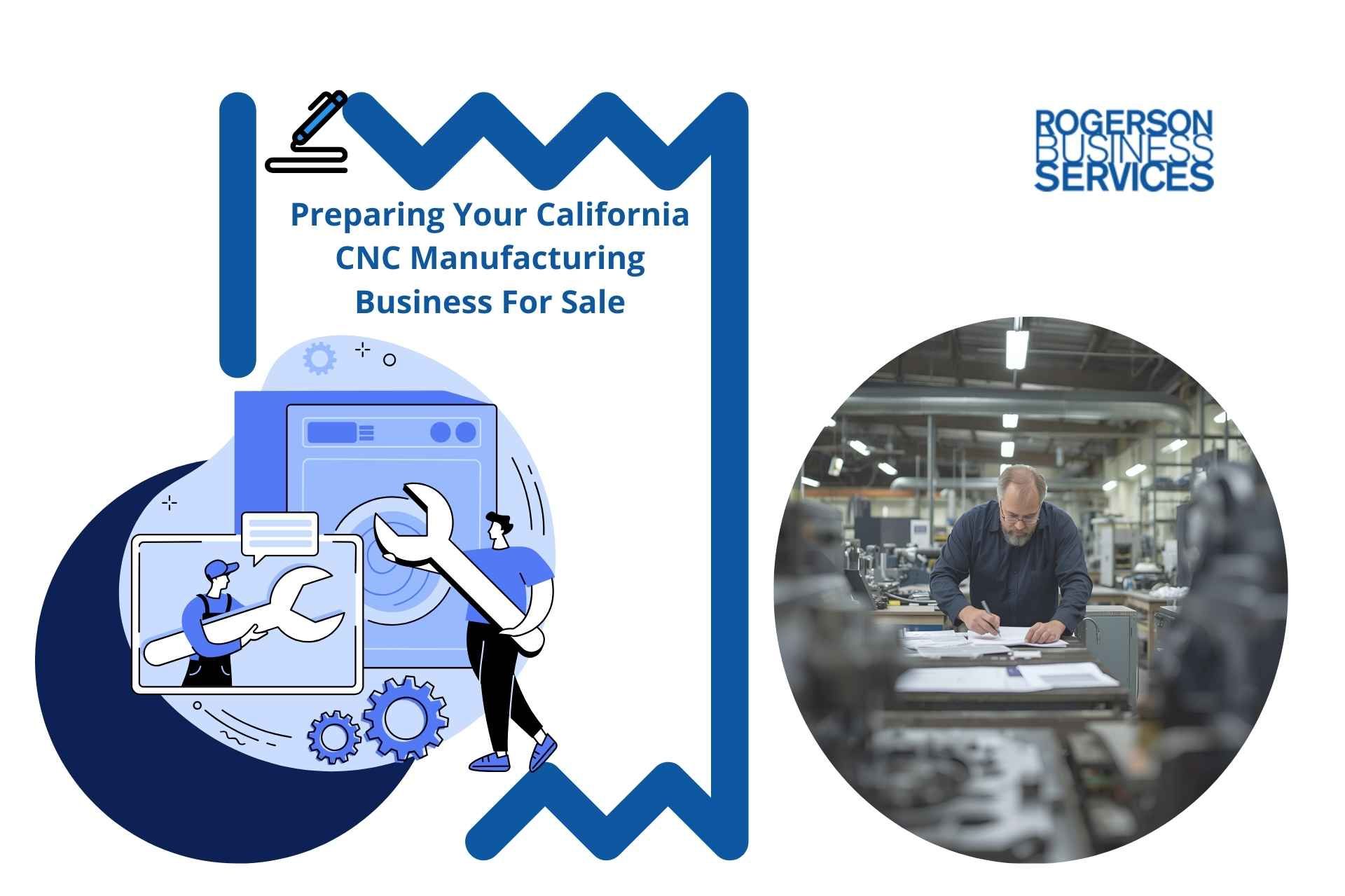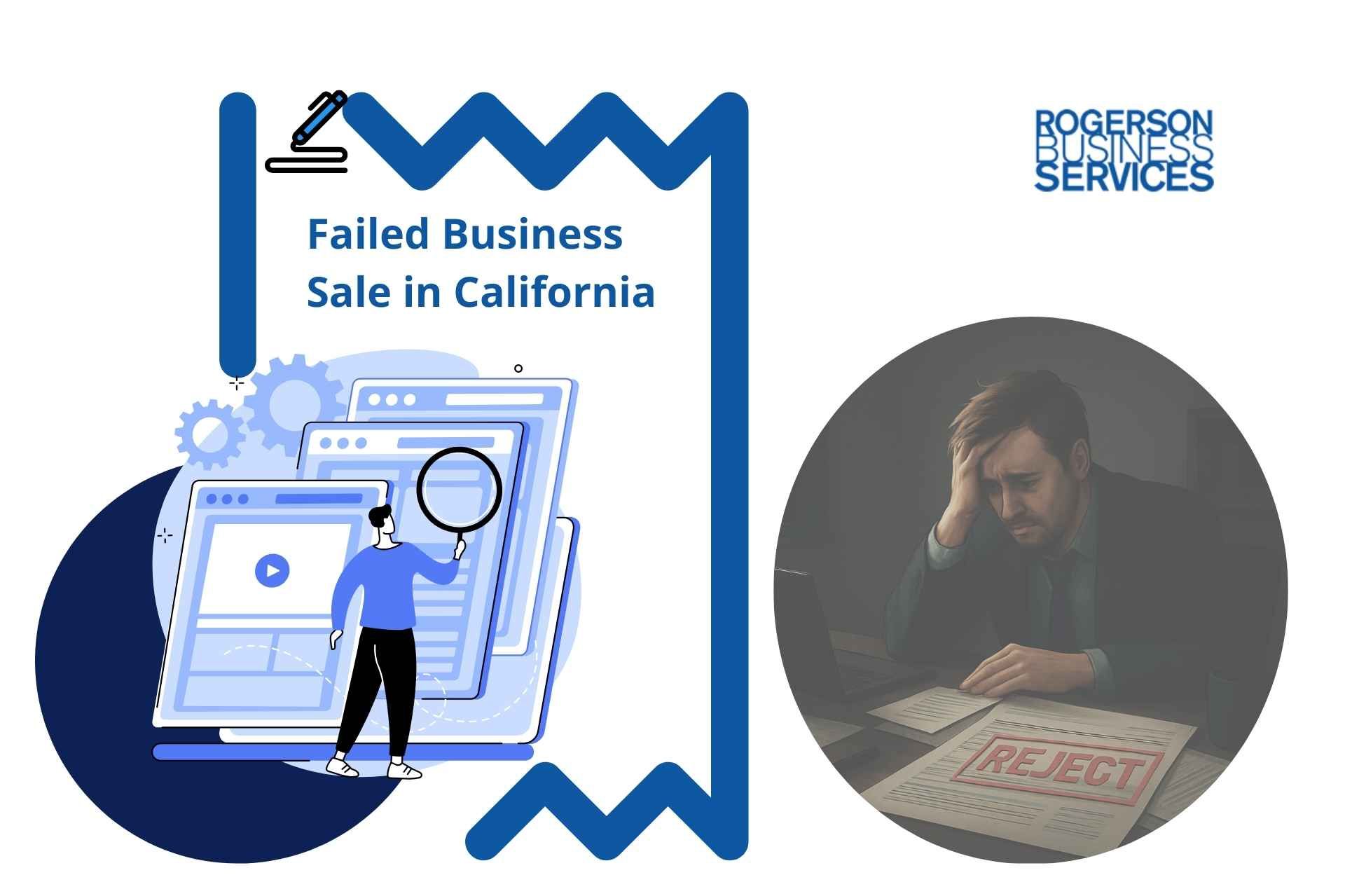SDE vs EBITDA Adjustments: Which One To Use When Selling a Business in California
SDE vs EBITDA
- SDE is a valuation calculation to be applied on main street businesses or under $1 million in valuation.
- EBITDA is a valuation calculation to be applied to lower middle market or mid-market businesses with a valuation exceeding $1 million.

SDE vs EBITDA, which one to use? Before determining your business value with SDE or EBITDA, it’s important to understand how both measurements work and which one to use. By understanding how SDE and EBITDA work, businesses in California can learn how to maximize their numbers before selling.
What Is The Difference?
SDE stands for Seller's Discretionary Earnings, while EBITDA means Earnings Before Interest, Taxes, Depreciation, Amortization. These are calculations used to determine the value of a business.
SDE measures the potential revenue of a business. This provides insight into a business's value by calculating the owner's discretionary earnings, like salary, benefits, and depreciation assets. The typical expenses included when calculating SDE are net income, interest, depreciation, amortization, and the owner’s total current compensation.
Since SDE adds back expenses not needed for business operation, the owner’s total compensation, and non-recurring expenses, it can provide buyers an accurate insight into the potential future profit.
We will illustrate how to calculate SDE for a business, which we call Business A.
Business A:
- Net income: $68,000
- Interest income: $25
- Interest expense: $435
- Taxes: $14,280
- Depreciation: $2,150
- Amortization: $300
- Non-recurring expenses: $67
- Owner’s compensation: $60,000
- Personal expenses: $200
Adding it all up ($68,000 + $25 + $435 + $14,280 + $2,150 + $300 + $67 + $60,000 + $200) we get an SDE of $145,457. Businesses with a high SDE mean that buyers will pay a higher multiple. For the example above, Business A’s SDE is over $100,000, so buyers are willing to pay multiples of 2 to 3.
Those less than $100,000 may see multiples of 1.2-2.4, and those greater than $500,000 can expect a price in multiples of 3 to 4. An SDE surpassing the $1,000,000 threshold will usually calculate the business value with EBITDA. However, the multiples vary from industry to industry.
EBITDA calculates business value using the same expenses as SDE minus the owner’s salary. While sellers could determine their businesses worth using only cash revenue, EBITDA goes a step further by providing buyers insight into potential expenses they may incur later on.
For example, as opposed to only cash revenue, if a business invests in growth expenditures, it should use EBITDA to provide a more appealing business value number.
EBITDA uses the same gain and loss numbers as SDE. Those are net income, taxes, income, depreciation, and amortization. However, calculating EBITDA does not include adding the owner’s yearly compensations. There are two variations of EBITDA: normalized EBITDA and adjusted EBITDA.
The Adjusted EBITDA takes the number from the unadjusted EBITDA and adds or subtracts values like start-up costs, litigation costs, donations, investments, and other business operation expenses. EBITDA adjustments vary from business to business, but they can help normalize the outcome amount for their EBITDA.
EBITDA adjustments are helpful when a business incurs a hefty expense, like investments or hiring costs that weaken normalized EBITDA. Adjusted EBITDA is also better for buyers to compare the number with other companies in the same industry.
You may be wondering, What is a good EBITDA?" Well, according to Forbes, businesses with an adjusted EBITDA higher than their normalized EBITDA show buyers that the business is healthy and seeing growth. Here’s an adjusted EBITDA example on how to calculate adjusted EBITDA from normalized EBITDA using Company B:
- Net income: $500,000
- Taxes: $7,500
- Interest: $5, 000
- Depreciation & Amortization: $12,150
After adding it all up ($500,000 + 7,500 + $5,000 + $12,150), we get an EBITDA of $524,650.
With adjusted EBITDA, Company B's new value will look like this:
- EBITDA: $524,650
- Goodwill impairments: $15,000
- Excess owner's salary: $50,000
- Non-recurring legal expenses: $18,000
- Gain on asset disposal: $12,500
After adding Company B’s list of EBITDA adjustments ($524,650 + $15,000 + $50,000 + $18,000 - $12,5000), Company B’s adjusted EBITDA is $595,150.
SDE vs EBITDA: Owner Salary Add-Backs
Does EBITDA include salaries? The most significant factor that sets SDE and EBITDA adjustments apart is that EBITDA does not include adding back the owner’s income. The owner’s salary add-backs increase the business's net income since small business owners typically pay themselves higher salaries. In addition, the buyer can decrease the salary to an amount that fits with the competitive market.
Decreasing the amount previously given to the owner increases the business's net income.
As shown above, adjusted EBITDA add-backs include salary, but it’s not the same as owner salary add-backs. The salary can be added as an adjustment if the total compensation exceeds the market rate.
How To Price a Business For Sale In California?
In general, small business owners with gross annual sales of under $1 million use SDE, while those earning over that use EBITDA. Going back to the example above, Business A's SDE came out to $145,457. At this number, buyers would likely pay a multiple between 2 and 3, making the business value around $200,000 and $270,000.
For EBITDA, Company B has a normalized EBITDA of $524,650 and an adjusted EBITDA of $595,150. To price a business using EBITDA, Company A should measure the Enterprise Value of its business to determine how to price its business for sale.
Buyers, investors, and banks compare EBITDA with Enterprise Value to reveal how healthy the business is. This is because EBITDA can make a business in the lower middle market appear financially sound and more profitable than it is by adding various expenses.
When pricing a business for sale, small businesses or main street businesses should value their businesses with SDE, and larger businesses or lower middle market to mid-market businesses should use EBITDA. SDE and EBITDA are important, helpful numbers for buyers to determine a business's health and growth, but there are other things to consider when pricing a business.
Baby Boomer Business owners should gather documentation of assets like businesses assets, revenue, price-to-earnings reaction, and annual cash flow. Another point to consider is the current business operations, the location, and the business culture.
SDE vs EBITDA: Final Thoughts
If you’re concerned about how to price a business for sale or want to maximize business value before preparing a business for sale, consider using an experienced professional, middle market business broker, to help you with positioning your company for the highest evaluation.
Hiring a sell-side broker can be a wise decision to help you successfully value and sell your lower middle market business in California at the highest price.
Are you a retiring business owner looking to exit your lower middle market business in California? Here are five tips to get you started:
1. Don't wait until the last minute to start planning your exit. The process of selling a lower middle market business can take a long time, so it's important to start early.
2. Have a clear idea of what you want to get out of the sale. Know your goals and what you're willing to negotiate.
3. Choose the right type of buyer. Not all buyers are created equal, so do your research and find the right one for your business.
4. Be prepared for a lot of due diligence. M&A buy-side due diligence is when buyers will want to know everything about your business, so be ready to provide documentation and answer questions.
5. Be flexible with the terms and conditions of the deal. It's important to be open to negotiation to get the best possible deal for your business.
Rogerson Business Services, also known as, California's lower middle market business broker is a sell-side M&A advisory firm that has closed hundreds of lower middle-market deals in California. We are dedicated to helping our clients maximize value and achieve their desired outcomes.
We have a deep understanding of the Californian market and an extensive network of buyers, which allows us to get the best possible price for our clients. We also provide comprehensive support throughout the entire process, from initial valuation to post-closing integration.
Our hands-on approach and commitment to our client's success set us apart from other firms in the industry. If you consider selling your lower middle market business, we would be honored to help you navigate the process and realize your goals.
If you have decided to value and then sell your lower middle market business or still not ready, get started here, or call toll-free 1-844-414-9600and leave a voice message with your question and get it answered within 24 hours. The deal team is spearheaded by Andrew Rogerson, Certified M&A Advisor, he will personally review and understand your pain point/s and prioritize your inquiry with Rogerson Business Services,
RBS Advisors.
This is part of business valuation methods to answer what's my company worth series ->
Hey there! Can we send you a gift?
We just wanted to say hi and thanks for stopping by our little corner of the web. :) we'd love to offer you a cup of coffee/tea, but, alas, this is the Internet.
However, we think you'll love our email newsletter about building value and properly position your company before transition/exit your business ownership.
As a special welcome gift for subscribing, you'll also get our helping and educational guides, tips, tutorials, etc.. for free.
It's filled with the best practices for retiring serial business owners like Dan Gilbert, Larry Ellison, Warren Buffett, and many more.
Just sign up for our emails below.


